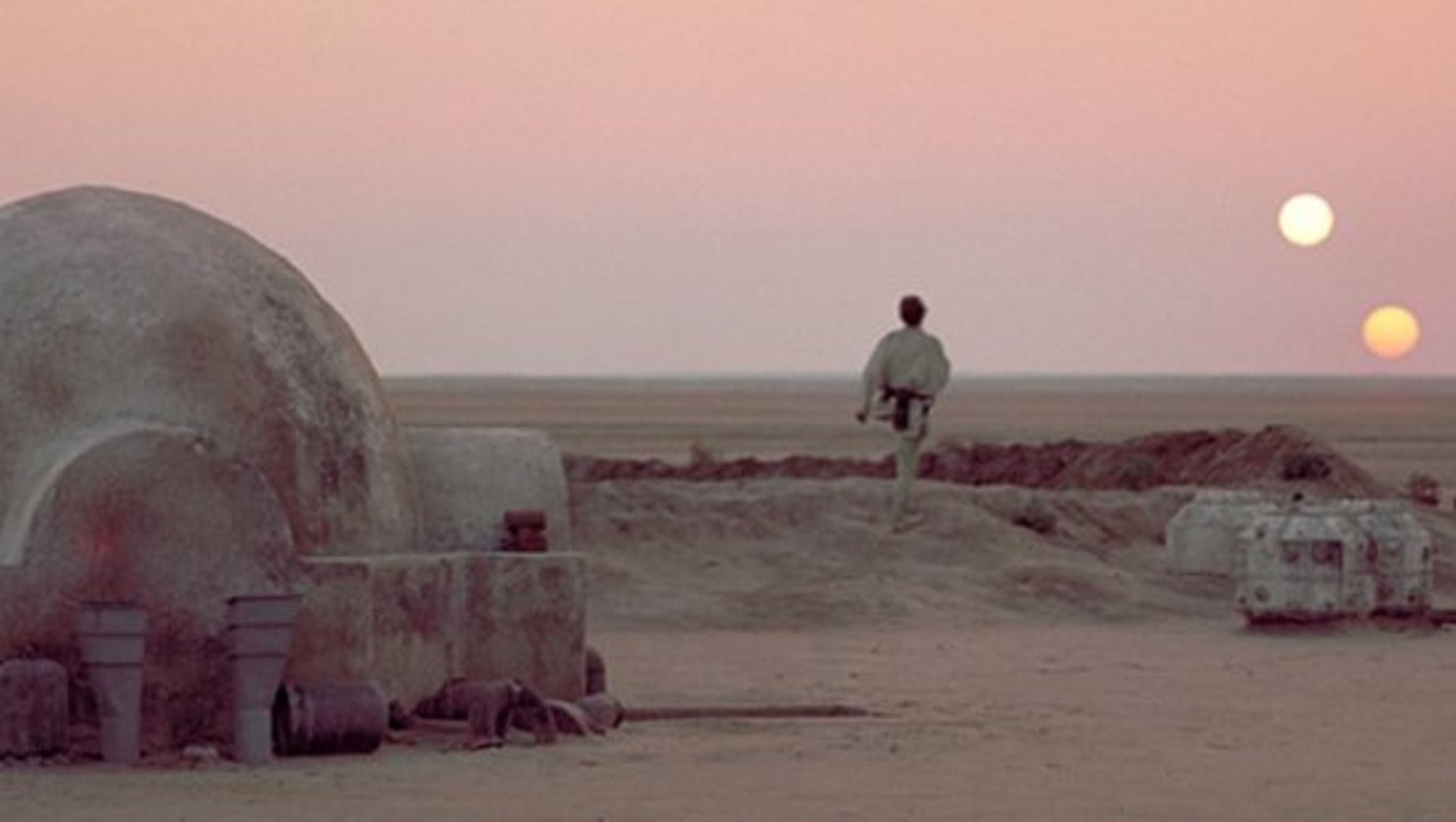Create a free profile to get unlimited access to exclusive videos, sweepstakes, and more!
NASA's planet hunter TESS just discovered a new Tatooine far, far away

Whenever they appear in a Star Wars movie, do you find yourself gazing at those two setting suns, longing to watch the spectacle on the faraway sands of Tatooine?
What most of us see as that memorable Tatooine sunset is an eclipsing binary, a phenomenon that may seem like fiction but is actually (weird) science. NASA’s planet hunting telescope TESS has just found its first planet in a star system whose two stars dance around each other until one eclipses the other in orbit.
While poring over TESS data, NASA intern Wolf Cukier first thought it was a stellar eclipse, but the phenomenon turned out to be something straight from a movie screen.
“I was looking through the data for everything the volunteers had flagged as an eclipsing binary, a system where two stars circle around each other and from our view eclipse each other every orbit,” said Cukier. “About three days into my internship, I saw a signal from a system called TOI 1338. At first I thought it was a stellar eclipse, but the timing was wrong. It turned out to be a planet.”
The “Tatooine” in question would be TOI 1338 b, the first circumbinary (orbiting two stars) planet that TESS has found in the constellation Pictor, some 1,500 light-years away from Earth and 6.9 times larger. It is also the only known planet in that system whose stars orbit and eclipse each other every 15 days. Eclipsing binaries are rare and hard to see, so that makes the find even more unreal.
Planets that orbit double stars are much more difficult for even a super-telescope such as TESS to catch a glimpse of than those which only orbit one star. For 27 days, each of the planet hunter’s four cameras takes a full-frame snapshot of a piece of sky every half hour. It beams back valuable data that scientists then use to figure out how stars brighten and dim over time. When a planet transits — or crosses in front of — a star, it will block out most or all of that starlight.
This was the type of data Cukier was studying when he came upon TOI 1338 b. Planets like this have irregular transits, so it’s nearly impossible to predict the exact day of the next one. Orbiting stars that already orbit each other doesn't help since star positions affect how long a transit takes and how visible it ends up being. The light from the smaller star of TOI 1338 is too faint to tell if something is passing in front of it. After the transit was identified, a software program named Eleanor confirmed it was for real.
So you might not be able to sit back and watch the full splendor of a Tatooine sunset from Earth, but you can always drink a Tatooine Sunset at Star Wars: Galaxy’s Edge.
(via NASA)


























